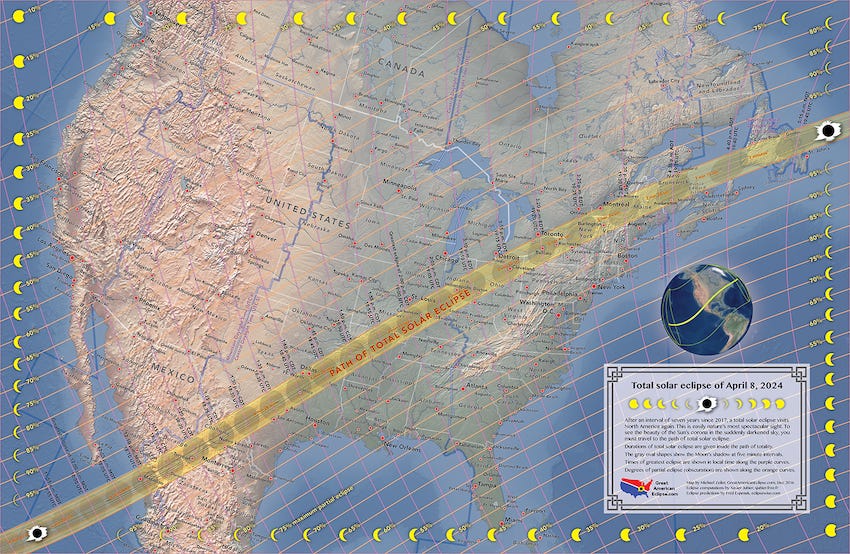Dear Esteemed Colleagues and Friends,
Eclipses have long been woven into the lore of human traditions. From the lunar eclipse during the crucifixion of Jesus, to the solar eclipse marking the birth of the Prophet Muhammad. Whether the eclipse represents divine intervention, punishment, or blessing it has always symbolized a communal shift. Outside of the narratives of the miraculous, eclipses occur regardless of the state of our ordinary lives on Earth. Regardless of one’s belief or education, anyone in the path of the moon’s projected orbit can catch a sight of the eclipse. Please follow along this experiment to catch the next eclipse.
Yours Truly,
Mad Black Scientist
Experiment 11:
Observation:
Yesterday morning an annular solar eclipse occurred over Los Angeles. For about 2 hours the moon passed between the Sun and the Earth, an event that occurs 2-5 times a year. Even though Los Angeles was outside of the eclipse’s path of totality, it was possible to catch the eclipse. The next solar eclipse that flies over the continental United States will be April 8th 2024.
Question:
How do you catch an eclipse?
Hypothesis:
It’s dangerous to look at the sun directly, so look at it indirectly.
Experiment:
In order to capture a solar eclipse you have to be in an area under the moon’s projected shadow. This path of totality is predicted by the relative motion of the Sun, Moon and Earth. The path of totality for the 2024 eclipse occurring on April 8th over America is below:
Once you’ve determined that you’re in the path of totality, there are a few methods to indirectly look at the sun during the eclipse. (To note dear reader, if you try to just stare at the sun you’ll harm your eyes, and you wouldn’t be able to see much regardless)
Wear eclipse glasses which filter the suns light so that you can view the eclipses shadow.
Put a filter over a camera lens so that you can capture the eclipse on your phone or camera.
You can project the eclipse through a pinhole onto a sheet of paper. Make a small hole in a sheet of paper with a pin. Shade another piece of paper with your pin hole and the image of the eclipse will show on your shaded page.
With any of these methods you will be able to see the sun partially covered by the moon and take in the significance of an eclipse.
Conclusion:
Eclipses bring attention to the constant changes outside of our control, and unite us as inhabitants of this planet. Whether a thousand years ago, yesterday or April 8th 2024, I hope you can catch an eclipse.

